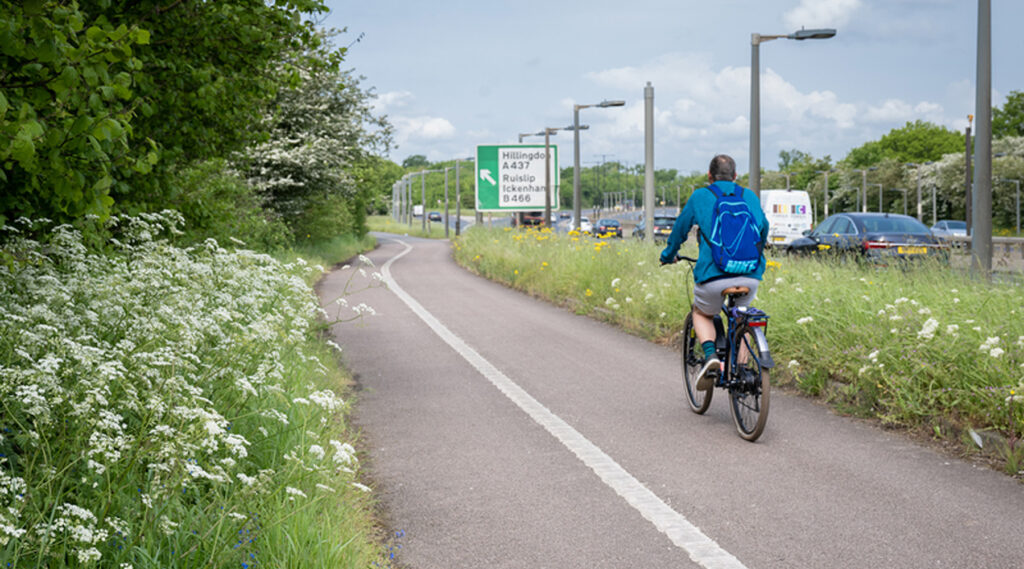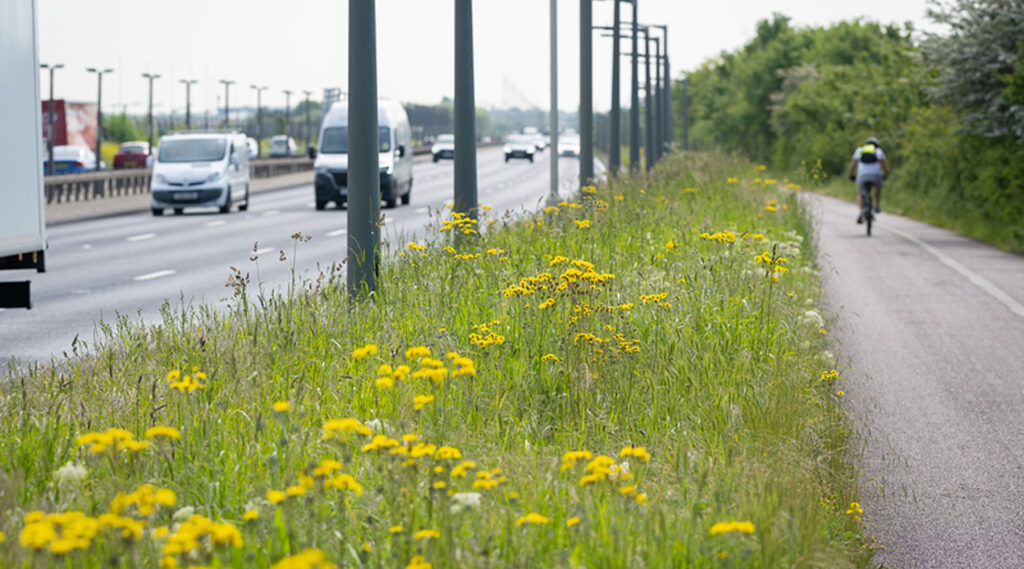Transport for London (TfL) has been trialling a reduced mowing of verges along roads and cycle lanes it managed in order to encourage wildflowers, and says it will expand the trial to more of London.
The trial sites, which included Redbridge Roundabout, Rowley Lane roundabout on the A1 and along the A40 in Hillingdon were assessed by TfL’s in-house environmental and asset management teams. TfL is now adding new locations, which will increase the area being managed this way to almost 130,000 square metres – the equivalent of more than 18 football pitches.
The new locations include Gants Hill roundabout in Redbridge, Clockhouse roundabout in Feltham and on the A21 Sevenoaks Road (Green Street Green) in Bromley.
Wildflower verges take several years to fully develop and are in bloom for a limited period of the year. TfL says that it will continue to maintain these verges, but mowing will be timed to allow wildflowers to grow, with edges regularly mowed to ensure they remain safe for passing drivers.
Signage will also be installed helping to make clear that these areas are being managed to encourage wildflower growth.
TfL will be keeping all sites under review and also looking at whether additional sites both on the TfL Road Network, as well as on other green spaces managed by TfL, could be managed this way in the coming years.
Lilli Matson, Chief Safety Health and Environment Officer at TfL, said: “We are committed to building a network that is resilient to climate change and promotes biodiversity while being safe and reliable for Londoners. The new wildflower verges will encourage biodiversity and make London a more liveable and nature-rich city. We will continue to work with our partners to adapt our network to reduce the short and long-term impacts of climate change.”
The introduction of new wildflower verges forms a key part of TfL’s commitment to enhancing biodiversity across its estate. TfL’s plan will be set out in the forthcoming Green Infrastructure and Biodiversity Plan. The plan intends to provide clear information on TfL’s approach to protecting, connecting and enhancing biodiversity and how TfL will work with other organisations to tackle this vital issue both now as well as part of longer-term planning.
As well as increasing biodiversity on roadside verges, TfL is also working to implement new Sustainable Drainage Systems (SuDS) across London, with a particular focus on SuDS that include green infrastructure, such as rain gardens.









Leave a Reply